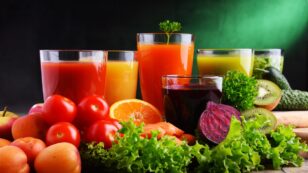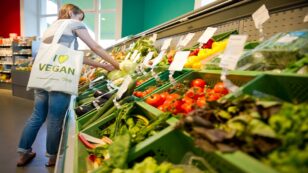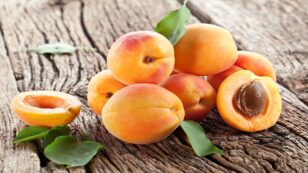
The Most Hydrating Fruits and Veggies to Keep on Your Plate This Summer
Here are eight fruits and vegetables with high water content to snack on when the temperatures are soaring.

Here are eight fruits and vegetables with high water content to snack on when the temperatures are soaring.

Green tea is now one of the most popular beverages consumed across the world for wellness and enjoyment. Below, we’ll discuss six evidence-based benefits of green tea.

Ayurvedic medicine considers the individual as the main focus of treatment, and many of the ingredients utilized can be found in your kitchen. Here are ten powerful ayurvedic herbs and spices with science-backed health benefits that you can include in your diet today.

Gluten aside, grains and grain-based products like pasta and bread are primary sources of carbohydrates, and the American diet is notorious for including too many refined carbohydrates. However, even whole grains that have been traditionally seen as beneficial by nutritionists have come under fire. Diets like keto, paleo and Whole30 focus on avoiding grains, but are grains all that bad? Here’s all you need to know about eating a grain-free diet and whether or not it’s healthy for you.

Argan oil is a plant oil produced from the fruit of the argan tree (Argania spinosa L.) that originates in Morocco. The oil has been used around the world for cosmetic, culinary and medicinal applications for centuries. Favored for its nutty and subtle flavor, you’ll also be impressed by these five health benefits. 1. Argan […]

In the early 2000s, juicing vegetables and fruit emerged as a trending diet. From green juice to celery juice, the popularity of juicing is more than just a fad. Juice bars continue to pop up around the United States, and the market held steady at $2.36 billion in 2020, according to Statista. But which vegetables […]

A new study from The Good Food Institute (GFI), the Plant-Based Foods Association (PBFA) and SPINS, a wellness-focused data technology organization, has found that at U.S. grocery stores, plant-based food sales were three times higher than total food sales in 2021. According to the report, plant-based food sales increased 6.2% compared to previously record-high sales […]

Olive oil has been used for centuries as both a food and medicine, originating from the Mediterranean region. Many types of olive oil differ in quality depending on how the oil is extracted, and this influences the quality of the final product. Cold pressed olive oil is one of the best types of olive oil […]

Apricots (Prunus armeniaca) have the tartness of a plum but the juiciness of a peach. These stone fruits are extremely nutritious and contain many health benefits, from high antioxidant content to improved digestion. When the Romans learned of the apricot in the first century A.D., they called it “praecocum” or the “precious one.” The apricot […]